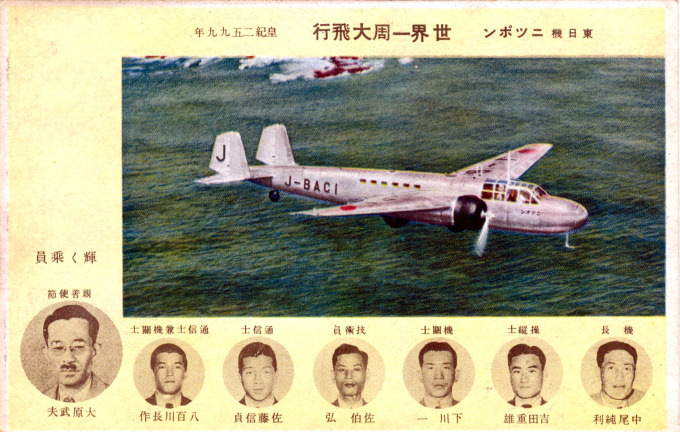
The flight crew of the modified Mitsubishi G3M2, “Nippon”, who completed the around-the-world flight in 1939. The postcard is captioned on top using the imperial year “2599” – one year before the 2600th anniversary in 1940 celebrating the founding of Japan’s unbroken imperial lineage (so it is said) back to 660 BCE.
Only days into the journey, on Sept. 3, England and France declared war on Germany. The globe-circling flight was, then, almost canceled while in-route but, by changing the route (eliminating European stopovers for a southerly passage through South America before crossing the Atlantic Ocean for a North Africa transit [see map below]), the crew were able to circumnavigate back to Japan, marking their return on October 20th.
See also:
Mitsubishi G3M “Nell“, 1935-1945
2600th Anniversary of the Founding of Japan, 1940.
“The Japanese good-will plane Nippon landed at Newark Airport at 1:37 P.M. today [Sept. 8, 1939] after a flight from Chicago, her crew uncertain as to whether they would follow the original plan to visit Germany, France and England, after touring South America.
“Fukuichi Fukomota, bureau manager of the Nichi Nichi in New York, Tokyo newspaper which is sponsoring the flight with the Osaka Mainichi, expressed the opinion the visit to the warring nations would be canceled. He was uncertain whether the plane would stop in Italy, but said plans had been completed to continue the flight to Africa. Takeo Ohara, manager of the flight, said only that the plane was in excellent condition and the crew ‘as fresh as when they started two weeks ago from Sapporo.’
“Great flight around the world”, 1939. “Across the Pacific & the Atlantic, over the Five Continents.” Published by the Osaka Mainichi and Tokyo Nichi Nichi newspapers.
“… The plane was wheeled into Newark’s new municipal hanger, where a reception was held. After a short stay here, the Nippon will make a circle tour of South America. Stops already have been made at Nome, Seattle, San Francisco, Los Angeles, Alburquerque and Chicago.
“Accompanied by the Japanese consul general, the good-will fliers arrived late yesterday afternoon at the World’s Fair and were greeted at Perylon Hall by Edward F. Roosevelt, director of foreign participation of the exposition. After signing the distinguished guest register, the fliers visited the Aviation Building and then were guests of honor at the Japanese pavilion.
“The group included Takeo Ohara and the crew: Shigeo Yoshida, co-pilot and second in command; Hajimi Shimokawa, chief engineer; Hiroski Saeki, mechanical engineer; Nobusada Sata, wireless operator; and Chosaku Yaokawa, assistant wireless operator.”
– “Japanese Good-Will Fliers Here on Round-the-World Trip”, New York Times, September 9, 1939
- Flight map and crew of “Nippon” around-the-world flight, 1939, showing the planned route around-the-world west-to-east. Due to the onset of war, the transits in Europe were abandoned in favor of a route across the north of Africa to the Middle East.
- The “Nippon” (J-BACI) , 1939, the modified Mitsubishi G3M2 that carried a crew of seven around the world.
“The Japanese world fliers left their airplane at Newark Municipal Hangar and checked into the Hotel Commodore [in New York City] for several days. Sightseeing throughout the region included trips across the Hudson to Rockefeller Center, the Empire State Building, the Bronx Zoo, the Aquarium at the Battery and of course New York’s World’s Fair of 1939, particularly the Aviation Pavilion.
“Scheduled departure on Tuesday the 12th [of September] was postponed for twenty-four hours. The reason for the delay was not rain or mechanical problems, but a baseball game. The Japanese wanted to see Joe DiMaggio in action at Yankee Stadium.”
– Around-the-World Flights: A History, Patrick M. Stinson, 2011
- “The song of the Great Round-the-World Flight”, including music and lyrics, 1939. Published by the Tokyo Nichi Nichi newspaper.
- “The song of the Great Round-the-World Flight”, including music and lyrics, 1939. Published by the Osaka Mainichi and Tokyo Nichi Nichi newspapers.
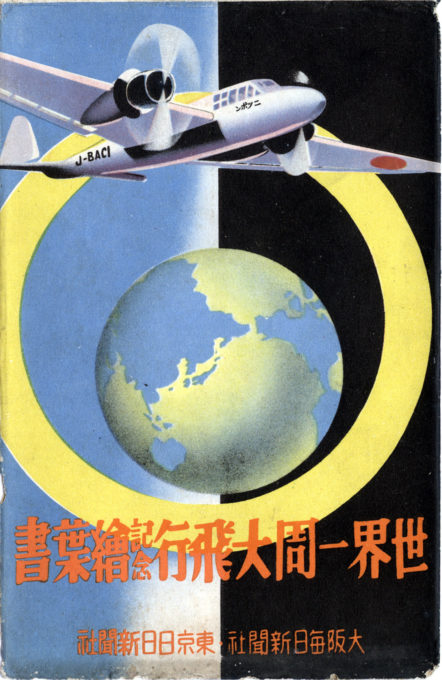
Commemorative postcard packet cover, “Memorial postcards for the Great Round-the-World Flight”, 1939. Published by the Osaka Mainichi and Tokyo Nichi Nichi newspapers.
“A second major Japanese achievement was recorded in 1939 when, once again, the world appears to have been taken completely by surprise as the result of another record-breaking flight. This was a good-will circumnavigation of the globe undertaken by Nippon (J-BACI), a civil transport version of the twin-engined Mitsubishi G3M2 monoplane bomber that had already made its presence felt in China.
“Departing Tokyo on 26 August, the flight should have included a European leg, but this had to be abandoned due to the outbreak of war [on Sept. 1, 1939]; instead Nippon flew across the USA and onto South America before a crossing of the Atlantic that saw it taking in Senegal and Morocco. In total, the flight was completed in fifty-five days, with Nippon arriving back in Tokyo on 20 October having flown 32,862 miles in 194 flying hours.”
– Air Wars 1920-1939: The Development and Evolution of Fighter Tactics, by Philip MacDougall, 2017


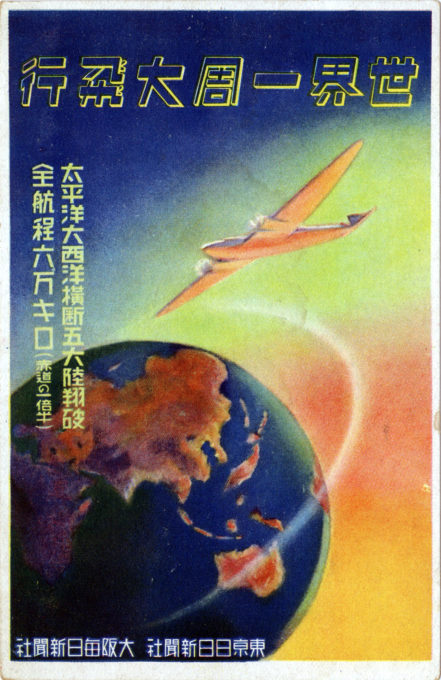
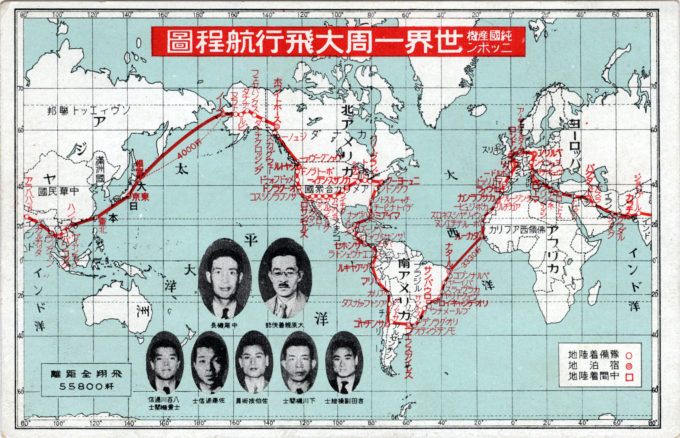
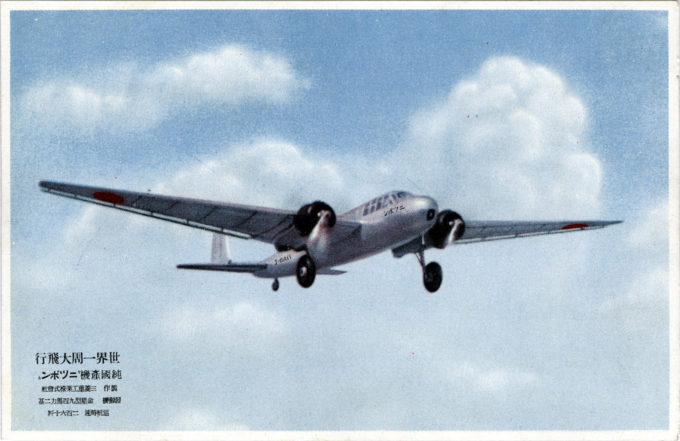


Pingback: Mitsubishi G3M, “Nell”, 1935-1945. | Old Tokyo
Pingback: El peor momento posible para un vuelo mundial de buena voluntad
Pingback: Gasuden “Kōken-ki” world-record non-stop flight, 1938. | Old TokyoOld Tokyo